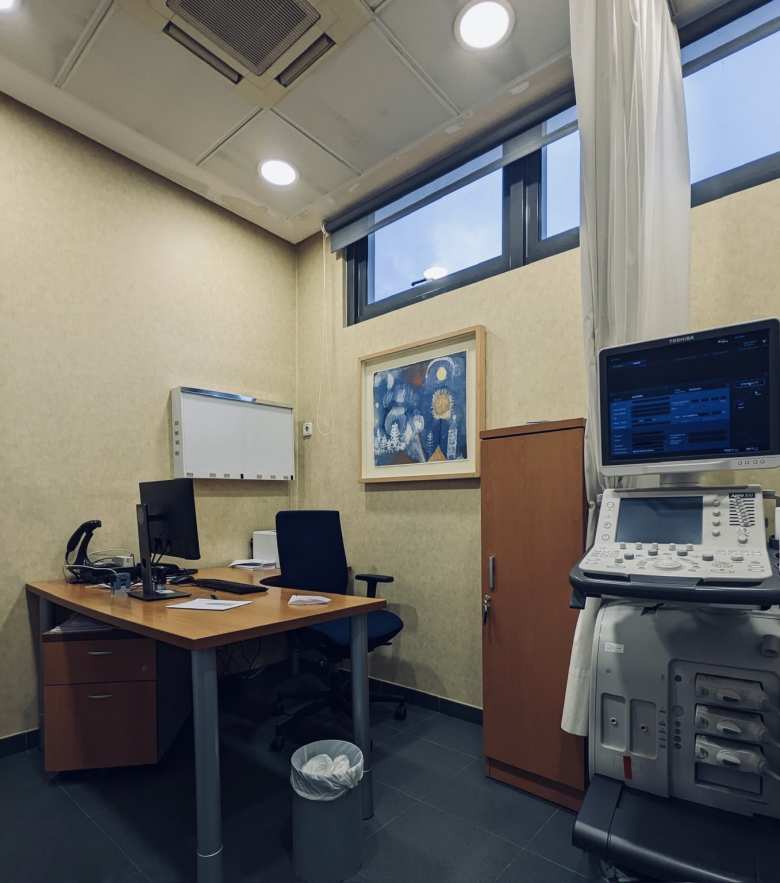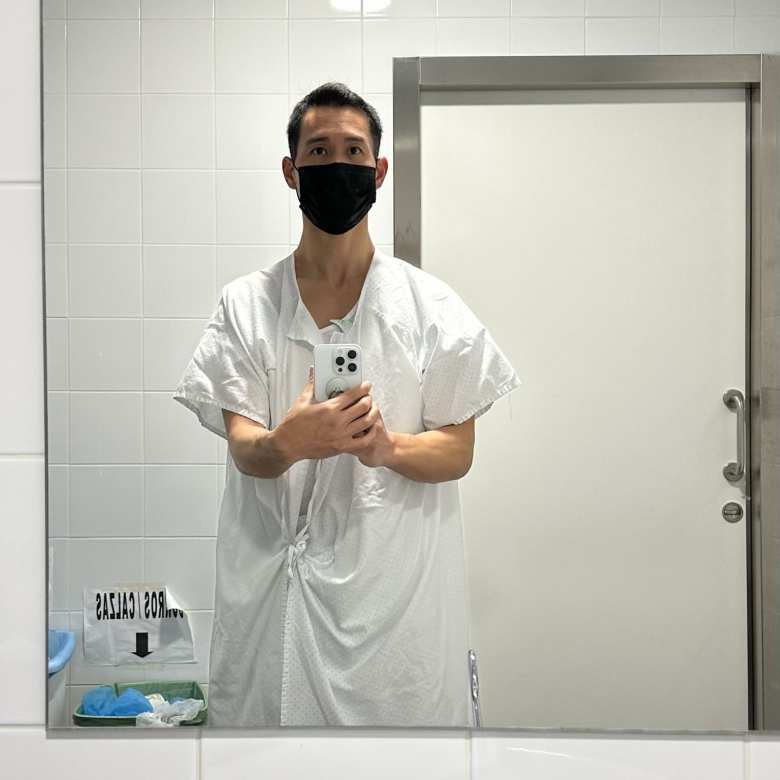My Experience with Private Health Care in Spain
As an American living in Spain, I wasn’t sure what to expect from the healthcare system. As a new ex-pat, I had to get private health insurance as a condition of my residence visa. Fortunately, my partner is both a Spaniard and an emergency room doctor. Despite working in the public sector, she was always there to help me navigate the system.
Unfortunately, in 2022 I had to visit hospitals more than ever. But that gave me some experience with them, which I will share in this article.
Health Insurance
I have health insurance through Adeslas, a private health insurance company in Spain. For 2022, my health insurance cost 708€ for the whole year, which was approximately US$821 at the time. For 2023, it cost 730€ (about US$781), which was less than the year before due to the stronger dollar. The insurance provides me with full coverage with no copays or deductibles. It covers all my healthcare needs, including sanitary assistance, accidents, emergencies, and repatriation for medical purposes and/or death.
Compare this to the private health insurance I had in the United States, which was far more expensive for less coverage. Of course, taxes in Spain are much higher. But lower health care costs take some of the sting off from that.
Health Issue #1
In April 2022, I had a couple of small rashes on my dorsal. At first, I thought it was a fungal infection, but it did not resolve itself using anti-fungal cream. So Andrea called Adeslas to schedule an appointment for me with a dermatologist, but was told the earliest appointment available was three weeks out.
However, Andrea, who is a emergency room doctor in the public sector, knew a dermatologist who worked at the Adeslas clinic and agreed to see me as a favor. Within 10 minutes of looking at me, the dermatologist concluded that I had “pityriasis rosea” (which sounds scarier than it is) and that no treatment was necessary. She said it would resolve itself on its own within 6-8 weeks. She was right.
Health Issue #2
I had my first kidney stone, which was a painful experience. I went to the emergency room at the private hospital, Hospital Miguel Domingüez. The care I received was good. The wait was only five or ten minutes, the staff was professional and attentive, and the facilities were modern and clean.
I ended up staying in a private room hooked up to an intravenous tube giving me liquid painkillers for six-and-a-half hours. Most of the reason was to rest, but also to get an X-ray and wait for the X-ray results.

The staff showed Andrea a paper printout of the X-ray, which seemed a bit low-tech to her. They said they couldn’t see a kidney stone on the x-ray and recommended doing a CT scan, which Andrea flatly rejected since we did not need additional confirmation of the problem. She also did not want me exposed to radiation which, in this case, was entirely unnecessary.
But all-in-all, I was very pleased with how the hospital dealt with this medical emergency. You can read more details about my kidney stone experience in this blog post.
Medical Checkup
As a preventative measure, later in the year, I decided to get a routine annual physical, including an analytica (blood analysis). I was able to schedule an appointment with an internal medicine doctor using Adeslas’ app. For most doctors listed on the app, I would have needed to make a phone call to make an appointment. But there were a few I could schedule an appointment with right from the app. I picked one of them because I much prefer to make appointments online to avoid miscommunication by phone call.
On the day of the appointment, the check-in procedure was straightforward. I scanned my Adeslas card with a kiosk machine, which then printed me out a number. (But most other patients checked in with staff instead and got a number that way.)
I went to the waiting room and waited for my number to show up on a TV screen. The doctor was friendly, although he kept calling me “Wong” even though one of the first things I told him was “me llamo Félix.” Every one of his sentences was prefaced by, “Wong!, ….”
During the physical, the doctor had me take off my shirt and checked my breathing and heart with a stethoscope. He then ordered a “diagnostico por imagen” (so that he could bill Adeslas). He proceeded to do the ultrasound of my abdomen with an Aplio 300/Toshiba machine himself. The physical started right on time and was completed within half an hour.

However, I did need to come back the next morning for a blood draw and urine test. That required fasting for 12 hours.
A few weeks later, I had two more appointments related to the physical: one for an electrocardiogram and blood pressure check, and another immediately afterward for a follow-up consultation with the doctor. He looked at the results of the blood and urine tests (from two weeks prior) and the electrocardiogram (from the same morning) and told me todo bien (all is good).
I told him about my family history of colon cancer and asked if I should get a poop test. But he insisted that I do my first colonoscopy instead, which is recommended for all males at age 50, and age 45 for males with a family history of colon cancer. He gave me a piece of paper to order a colonoscopy and asked me to go to Hospital Miguel Dominguez (a seven-minute walk away) to schedule one.
The hospital ended up calling me a few days later to say they had an available slot for me in January. That was about six weeks after I put in my request, and it worked perfectly with my travel schedule.
Colonoscopy
A few days before the appointment, the hospital called me to remind me of it and ask me to go to the Adeslas office to request approval for the procedure. I brought the order slip they had given me back in November and, within five minutes of meeting with an Adeslas employee, had the approval I needed to have the procedure done.
Four days before the colonoscopy, I started a strict diet of meat, liquids, and no fiber or dairy. White rice and pasta were okay, but vegetables and fruits were off the table. Thirty hours before the appointment, I could only ingest liquids and Citrafleet to clean out my bowels. Three hours before the colonoscopy, I was not allowed to eat or drink anything, not even water.
On the day of the colonoscopy, I went to the hospital with Andrea, who accompanied me for moral support, and because the hospital recommended I have someone there.
We checked in at the main reception of the hospital and were instructed to go to a different floor. It took some asking around to find the correct room. Once we found it, a friendly nurse handed me a hospital gown to change into.

I elected to have light anesthesia, which the guy who gave me the gown highly recommended. A few minutes later, I was joking around with the doctor who I had talked with on the phone four days before. She said my Spanish was much better than it was on the phone. Then she had me lie down on the operating table. Within minutes I fell asleep, only to wake up near the tail end of the procedure.
During the colonoscopy, I was aware of some poking, but it didn’t hurt. The doctor removed two polyps she described as “muy pequeño” (only 2 or 3 millimeters). She sent them off for analysis.
Overall, it was a good experience. The colonoscopy–from check-in to check-out–was less than fifty minutes. I was allowed to walk home soon after it was finished.
A couple of weeks later, the hospital called me to come pick up the results of the colonoscopy. The polyps were non-cancerous. I was never worried that they were, but of course, I was happy to hear that news.
Conclusion
So far my experience with private health care in Spain has been overwhelmingly positive. Not only has it been amazingly cost-effective, but the service has been good with minimal time spent in the waiting rooms.
One difference with the U.S. is that there have been more appointments and paperwork delivery involved. E.g., for the physical, I essentially had four appointments on three separate days–and that excludes the colonoscopy. My city of Pontevedra is very walkable and everything was close by, so it wasn’t a major inconvenience for me. But it could be for others, especially those that needed to work full-time.
Andrea is an M.D. in the public sector, and she assures me that in Spain, public hospitals are generally better than private ones. She also said the best doctors work in the public ones.
However, from her stories about the emergency rooms she has worked in, it seems to me the wait in public ERs can be very, very long. Many wealthy Spaniards will elect to have private health insurance despite having full access to public hospitals for that reason.

There are 5 comments.
I liked hearing about your experience. In the US they like to tout the health care system as terrific. While I've found it not so. Now that I've had to begin needing it for a serious issue.
I recently began having a strange health symptom. I have Medicare Advantage - so a private insurer. Your experience is much better than mine. I've been dealing with this problem for a year, still undiagnosed. Waiting from 4 to 6 months to get appointments. Having to go through ineffective hoops.
My husband & I had always considered moving to another country for years, but haven't because of our kids & grandkids. Our one life regret is not having done so when we were first married over 50 years ago.
A very interesting read. I enjoy reading of your expat experiences.
Best wishes, Karen
Hi Karen, thanks for your comment. Good luck with Medicare Advantage. Four to six months sounds very inconvenient and inadequate! I hope you get an appointment soon.
I understand the regret of not living in another country. I regretted taking advantage of study abroad opportunities when I was younger. So I feel very fortunate to have a chance to live overseas now. Maybe one day you will have an opportunity too.
Take care.
Hello Felix. My family and I are planning on moving to Spain on the DNV and one our visa requirements is also private medical insurance. I have narrowed ti down to Adeslas and Sanias.
Could you explain what led you to pick Adeslas? It seems hard to parse out any difference between them. Any insight that you have would be really appreciated.
Looks like you are still enjoying your time there, that last trip to Madrid looked awesome!
I couldn't parse much difference between the private health insurance plans either. I picked Adeslas mainly because that's what many (most) other American expats seemed to do. Also, I was able to get a quote and sign up immediately with Adeslas agent Carlos Andres Blanco Rey.
As you could probably tell by my post, I've been very satisfied with Adeslas.
Good luck with your move to Spain, and thanks for stopping by my site!
This is a very informative content. I love this because it gives me all the information I need to know about the benefit of having private health insurance.